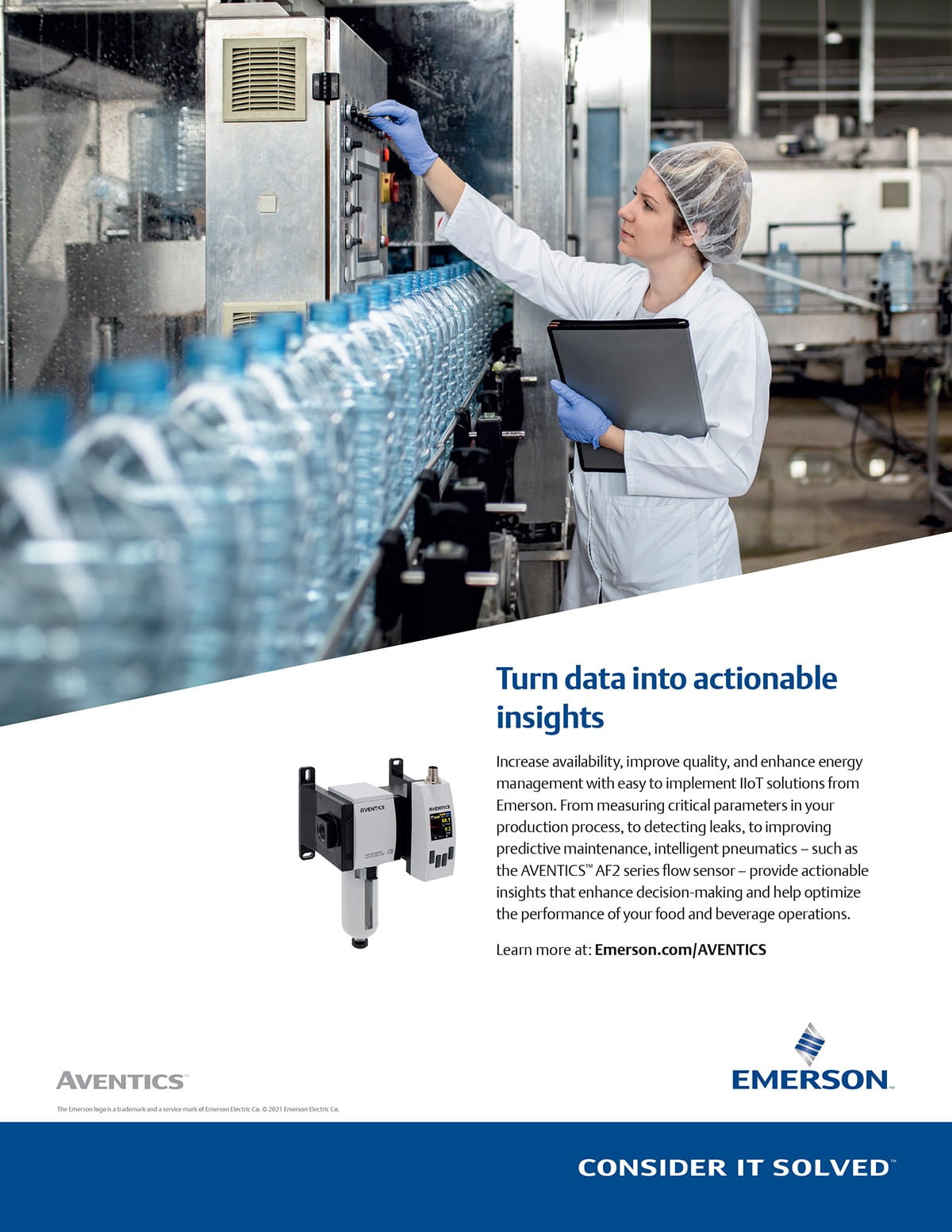What’s more, more than two dozen gas cylinders were stored on-site, taking up valuable floor space and creating potential safety hazards. Employees had to physically move tanks, each weighing about 100 pounds, to switch them three to four times a week. Crafting integrated solutions The microbrewery reached out to Beauce Technologie, a Quebec City company that specializes in gas manifold system design and installation. Jimmy Roy, Beauce’s vice president, said they collaborated with the brewery to design a gas distribution system manifold that offered more efficiency and control than the manual system. As Beauce began to develop a solution, the team ran into challenges, including pressure regulators that weren’t working properly and solenoid valves unable to handle the high flow capacity. It needed to find components that would not only solve the individual issues but also work together to create an efficient system. Beauce shared its challenges with Emerson, and the Emerson team recommended its TESCOM™ SG3 Series Single-stage Regulator. Roy said the compact regulator, which is suitable for high-purity applications, resolved the flow and pressure control issues: “This regulator resolved a lot of the problems with flow and pressure control. We tested it, and it worked perfectly.” The regulator also offered regulation accuracy and repeatability for the high level of precision control the brewery required. As an integrated solutions provider, Emerson also was able to recommend a solenoid valve solution from its broad automation portfolio: the ASCO™ 291 Compressed Natural Gas Valve. Emerson Product Marketing Manager Naresh Kumar said, “We specifically designed this valve for compressed natural gas applications that require the ability to handle pressure over 5,000 psi. Its wide pressure range makes it well-suited for a brewery application.” The valve would allow the new system to withstand high flow capacity as well as an expected pressure range of 200 to 5,000 psi. Emerson’s 291 Valve features a low-maintenance PEEK piston and durable operation in a compact design. Its stainless-steel construction makes it ideal for applications in the food and beverage industry as well. IPA: Integrated Pressure & fluid control Automation With the critical components in place, Beauce could integrate the regulator and valve with the designed electronic control system. The control system maximizes carbon dioxide use while eliminating the downtime that came with manual switchovers. When cylinder pressure drops to a predetermined level, the automated system closes the valve on the empty side and opens the valve on the other side. The speed of the valve opening can be controlled to avoid system shutdowns, which Roy noted can be a challenge in a distribution system regulating high-flow applications. “But when we use Emerson’s ASCO 291 Solenoid Valve on the TESCOM SG3 Regulator, together they can handle the high flow,” he said. In addition to automating gas distribution, the electronic control system gave the brewery a simple way to access system insights they didn’t have previously. The secure control system, which is based on a Linux operating system, provides real-time and historical line pressure data. Beauce’s design also incorporates a customized touchscreen interface and a mobile-friendly dashboard. Cheers to automation The brewery’s automation investment quickly reduced the production inefficiencies caused by reliance on manual processes and a lack of actionable insights. The increased efficiency cut the number of cylinders needed from 25 to 10, which has helped reduce manual labor, improve worker safety and lower transportation and storage costs. What’s more, the system’s scalability makes it suitable for breweries of virtually any size. Roy said, “The application is perfect for a small brewery because it can handle as many cylinders as needed, giving them flexibility as they grow.” The Quebec brewery can now monitor carbon dioxide use, allowing it to save time and money as well as make more informed production decisions. Since implementation, the company estimates that it’s saving almost $17,000 a year in gas utilization costs — a reduction of 42 percent compared with the non-automated system. In addition, the transition to automated gas distribution saves the brewery nearly $4,000 annually in productivity costs. Kumar said, “They went from doing everything manually with little control or insight to an automated solution that maximizes resources, saves money, reduces labor, increases safety and provides real-time data. It’s really simplified the microbrewing process.”
